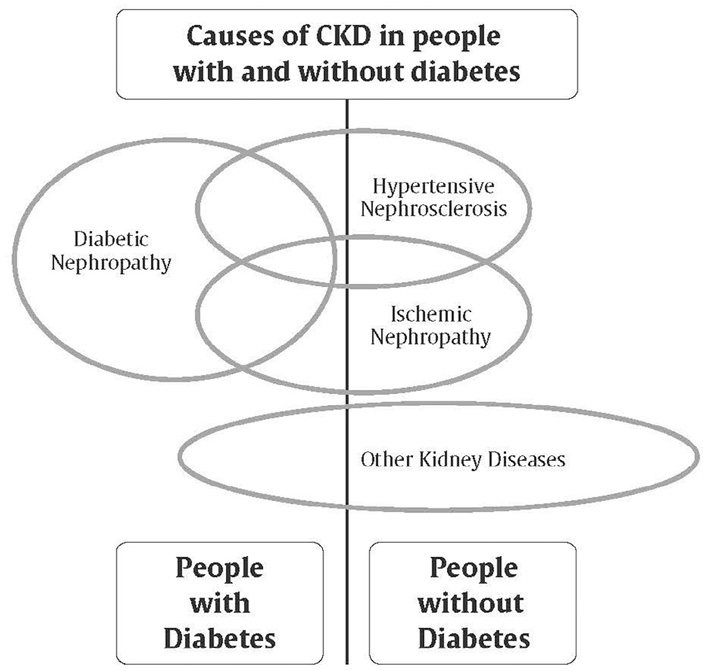Causes of Nephrophy in Diabetes Patients

Nephropathy is the medical term for kidney failure. Diabetic nephropathy is a life-threatening kidney-related disorder of type I diabetes and type II diabetes. It is also referred to as diabetic renal disease. About 25 percent of those with type I diabetes develop renal disease. Nephrotic nephropathy refers to the failure of your kidneys to function properly.
Kidney diseases are divided into two groups. The first category is termed primary and the second is referred to as secondary nephropathy. Kidney diseases that are classified in this manner include nephrotic syndrome, diabetic nephropathy, renal papillary necrosis, and renal colic. All of these diseases can lead to kidney failure. The most common form of nephropathy is nephrotic syndrome.
Diabetes is the leading cause of nephropathy. Nephrotic syndrome can occur even in the absence of signs of diabetes. Nephrotic nephropathy can be caused by renal failure caused by chronic kidney disease or nephrotic syndrome caused by nephrotic cysts. Nephrotic syndrome occurs more often in overweight people.
Nephrotic nephropathy is caused by renal papillary necrosis, which occurs when the blood vessels surrounding the kidneys become weakened. Nephrotic nephropathy can lead to scarring of the affected kidney. The effects of this nephropathy vary with age, but in some cases it can lead to partial or complete loss of the kidney.
Nephrotic nephropathy is a condition that can occur due to several factors, such as dehydration, blood loss, and overuse of diuretics. In patients with papillary necrosis of the kidneys, the volume of the kidneys is reduced. They also have decreased urinary excretion of water. This decrease in urine output leads to a decrease in urine flow. When this condition becomes too late, the concentration of blood and electrolytes in the urine drops.
Nephrotic nephropathy is a life-threatening kidney disease that is usually fatal if left untreated. It is the second leading cause of kidney failure in developed countries.

Nephrophy is more common in patients with type I and II diabetes than in patients with non-diabetic diabetes
Nephrotic nephropathy usually develops in older, overweight patients. The onset of nephropathy usually occurs after age 40, but can occur at any age. Renal failure, especially nephropathy, is more common in male patients. It is more common in women than in men.
If left untreated, nephropathy can cause serious complications. Nephrotic syndrome and renal papillary necrosis can cause kidney infection, kidney damage, and renal failure. Nephrotic syndrome can cause kidney stones, kidney failure, and nephrotic syndrome can lead to kidney failure and death. Nephrotic syndrome can also cause uremia or shock, bleeding and shock, kidney infection and bleeding, and can lead to infection of the lungs, liver and kidneys and cause irreversible kidney damage.
Nephrotic nephropathy is very common in men, but more common in women than in men. Men's incidence of nephropathy is nearly twice as high as that of women. Some of the reasons why men are more prone to nephropathy include a genetic predisposition, a higher body weight in comparison to female body size, and the presence of an underlying medical condition that increases the risk of nephropathy.
Ureterocele (the opening of the ureter) may be the primary cause of nephropathy. The ureterocele, or the space between the ureter and the bladder wall, is usually located between the bladder and urethra. The opening of the ureter can become enlarged with time, so that the ureter cannot drain as it should and may begin to collect urine as a buildup of urine.
A ureterocele is usually small and can be treated with surgery, but it can enlarge for many reasons, including: age, weight gain, kidney or kidney disease, or surgery, especially nephrectomy. Ureterocele is the leading cause of nephropathy in people with type I diabetes. If left untreated and not done detoxification, nephropathy can lead to narrowing of the ureters and even permanent blockage of the ureters. Ureteral obstruction can be dangerous and cause kidney failure.
Kidney damage and kidney infection are other possible causes of nephropathy. Kidney infection is a common cause of nephropathy, especially of the bladder. The disease can occur in people who have had kidney transplants for any reason, especially kidney cancer, and in those taking certain medications. Kidney infection, particularly end-stage renal disease, may increase the risk of nephropathy in people with diabetes.
